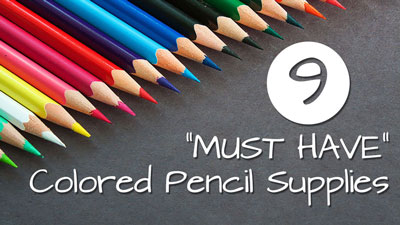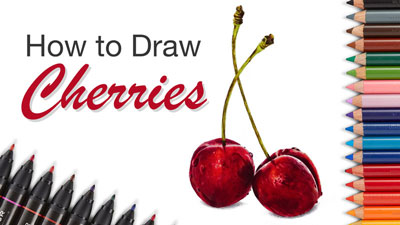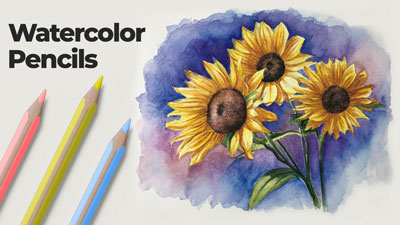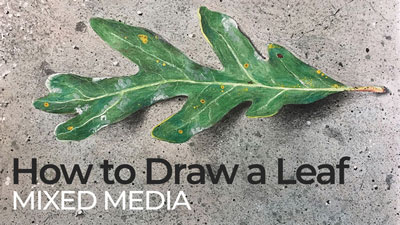Materials Used in This Lesson
Oil-based pencils are used in this lesson. While similar results can be achieved with wax-based colored pencils, application techniques do differ slightly. Layering colors is important in any colored pencil drawing – no matter if the artist uses the more common wax-based pencils or the lesser available oil-based pencils.
The oil-based pencils encourage layering a bit more which often leads to stronger depth in the color. Applications made with the oil-based pencils are noticeably less intense and are also influenced a bit more by the tooth or texture of the paper. They are also quite a bit softer than some of the wax-based pencils available on the market.
More on colored pencils…
- Colored Pencil Lessons
- Colored Pencil Comparison Chart
- Oil-based vs. Wax-based Colored Pencils
- The Colored Pencil Course
(Some of the following links are affiliate links which means we earn a small commission if you purchase at no additional cost to you.)
Specific oil-based colored pencils used in this lesson series…
Clearly, the surface also plays an important role in the look and feel of the finished work. The surface is many times just as important as the quality of the material used. In this lesson series, Stonehenge paper is used. This premium paper features a light tooth.
Since the paper is 100% cotton, it is quite soft. The softness of the paper means that it is more susceptible to indentations that can be produced by a pencil when heavier pressure is applied. Artists should be aware of this especially if the initial sketch is created with graphite.
This particular paper matches nicely with the light applications produced by the oil-based pencils. The tooth of the paper combined with the softer oil-based pencil applications creates a grainy appearance that may be preferred by some artists.
Here’s a link to pick up Stonehenge paper…
If so, join over 36,000 others that receive our newsletter with new drawing and painting lessons. Plus, check out three of our course videos and ebooks for free.




